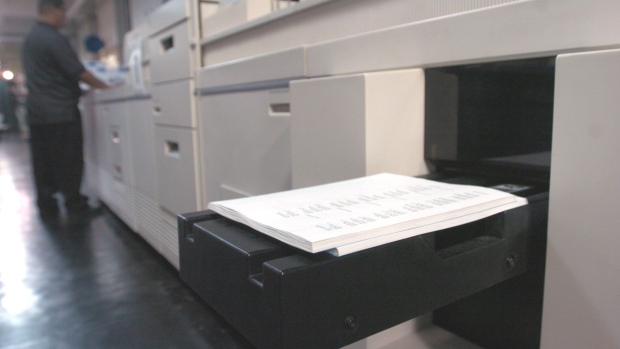Feb 25, 2020
Xerox Edges Closer to Fixing Its HP Printer Jam
, Bloomberg News

(Bloomberg Opinion) -- Carl Icahn looks increasingly likely to get his way, even if it’s not on his own terms.
The activist investor’s fingerprints appear all over Xerox Holdings Corp.’s $35 billion attempt to acquire HP Inc. But it always looked as if he might prefer the deal to happen the other way around. Indeed, he pitched an acquisition of Xerox to HP Chief Executive Officer Enrique Lores in November, Bloomberg News reported last week.
For all of HP’s positioning to counter the Xerox approach, it certainly looks as if Lores and his team are at least open to a combination from which HP emerges as the senior partner.
Their two complaints with the Xerox approach are that it undervalues HP and creates a company with an irresponsibly large debt pile. After all, it was HP’s considerable debt capacity that made a deal feasible to begin with: Xerox plans to lever up the target to pay for the acquisition.
Even with those reservations, however, Lores said on Monday that he’s now open to discussions with the photocopying pioneer. By implication, if he’s open to talks but averse to the capital structure that the current deal would require, then the inverse takeover seems the logical outcome.
Were HP to become the acquirer, the new firm would emerge with significantly less debt. The Xerox offer as it stands would likely load the new entity with debt representing at least five times earnings before interest, taxes, depreciation and amortization. In the unlikely event that HP were to pay cash for Xerox (there would almost certainly be a stock component), then it would have debt of less than four times Ebitda.
That includes the impact of a $15 billion buyback that HP announced today. The biggest risk for Xerox was that HP would essentially become the counterbidder for itself. By using his own balance sheet to boost shareholder value, Lores is doing just that. A $15 billion repurchase might buy back 50% of the shares, based on HP’s valuation before Xerox’s first bid. That could lift the share price well above the $24 a share of Xerox’s most recent offer.
While the buyback might prompt investors to ask why it wasn’t done sooner, it supports Lores’s assertion that HP doesn’t need a deal with Xerox to create value for shareholders. Crucially, it would make the most recent offer from Xerox less feasible. Some $8 billion of the buyback would come in the first year, massively reducing HP’s debt capacity while still leaving it the capital headroom needed to be the acquirer. It could also make an all-stock combination simpler, not least by reducing HP’s market capitalization.
Now the open question is how to value Xerox. Bloomberg News reported that Lores rebuffed Icahn’s November suggestion of a $45-a-share offer. That’s where HP might need to make some concessions. Taking into account the $1 billion in synergies that Lores deems feasible, and Xerox’s expected 2022 earnings, then a deal at that price would easily be covered by the target’s cost of capital. But it would also generously value Xerox at more than 12 times forward earnings. For comparison, the current offer for HP values it at about 10 times expected earnings. Looking at Xerox’s books would give management the opportunity to determine whether such an offer is warranted.
HP isn’t making Xerox’s life easy — nor would you expect it to. But the printer jam is closer to being fixed.
To contact the author of this story: Alex Webb at awebb25@bloomberg.net
To contact the editor responsible for this story: Daniel Niemi at dniemi1@bloomberg.net
This column does not necessarily reflect the opinion of Bloomberg LP and its owners.
Alex Webb is a Bloomberg Opinion columnist covering Europe's technology, media and communications industries. He previously covered Apple and other technology companies for Bloomberg News in San Francisco.
©2020 Bloomberg L.P.





